Rose Summer Village Rose Summer | unique Rose Summer Village Gesha Village the original Ethiopian summer rose summer Go
Professional coffee knowledge exchange More coffee bean information Please pay attention to coffee workshop (Weixin Official Accounts cafe_style )
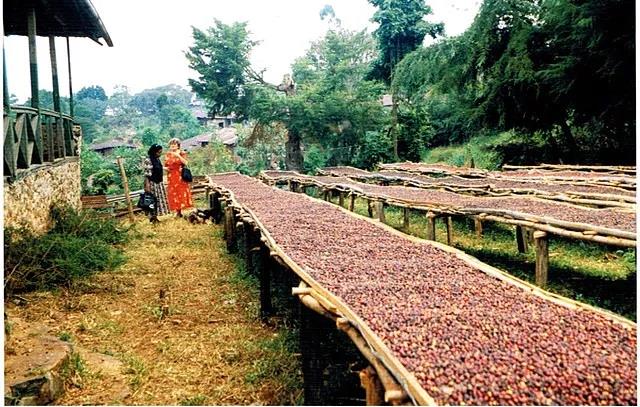
Ethiopia Gesha Village Gesha Gori Natural
Ethiopia summer rose village summer rose native species sun
producing areas| Banchimaji
altitude| 1900-2100m
varieties| Gesha Gori
approach| Sun-treated Natural
01 |Production area
In recent years, people have begun to pay renewed attention to the production of Gesha in Ethiopia's indigenous areas. To talk about Gesha Village, a brand of raw beans that has become popular in recent years, it must start with their founders Overton and his wife. In 2007, documentary director Adam Overton and photographer wife Rachel Samuel came into contact with the Gera Coffee Forest in Bench-Maji while filming a documentary about Ethiopian coffee for the Ethiopian government. In the process, they not only re-recognized Ethiopia as a great land, but also developed the idea of establishing their own coffee farm and brand.
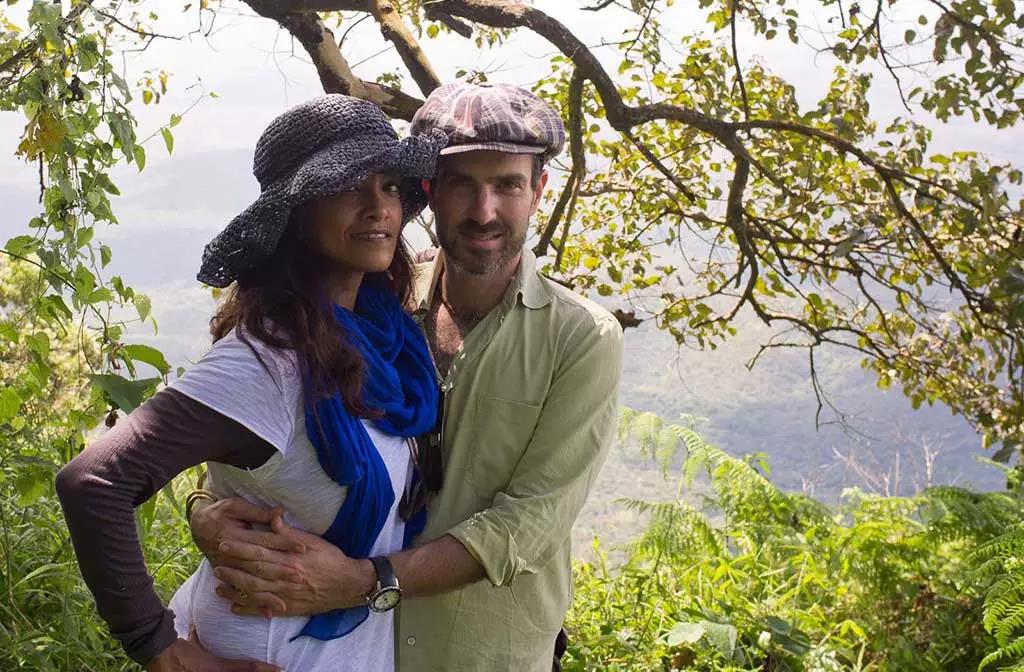
In 2009, they were lucky enough to meet Willem Boot, the owner of Mule Manor and BOP judge, and Willem Boot's idea also provided an opportunity for the Overtons to return to Ethiopia and find the birthplace of Guixia.
Finally they came to Banchimaji, a region of southwest Ethiopia near South Sudan, where there are many places called Gesha villages and where it is most likely to find the original summer. When I arrived in 2011, there was nothing in the manor.
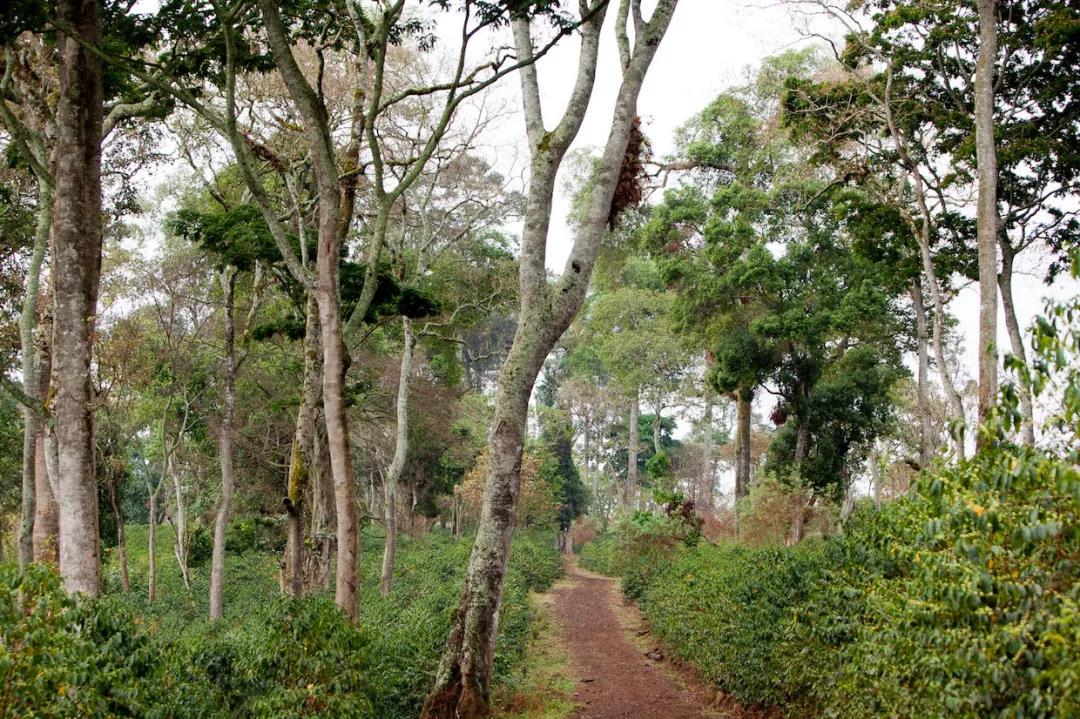
Adam followed Willem Boot in the forest around the manor to start "exploration", in a dense forest magically wrapped in the jungle, found a variety of wild tree species, the most let them surprise is the wild rose summer. Later they learned that this was the Gori Gesha Forest, where the seeds were first discovered. So they collected seeds from native rose trees, sifted them, and planted them in rose village. They decided to establish the estate here and named it Gesha Village Coffee Estate, a 475-hectare coffee farm located about 12 miles from the Gori Gesha Forest.
The total area of Guixia Village is 475 hectares. Since 2011, the planting area has been gradually expanded. By 2017, the planting area is about 320 hectares.
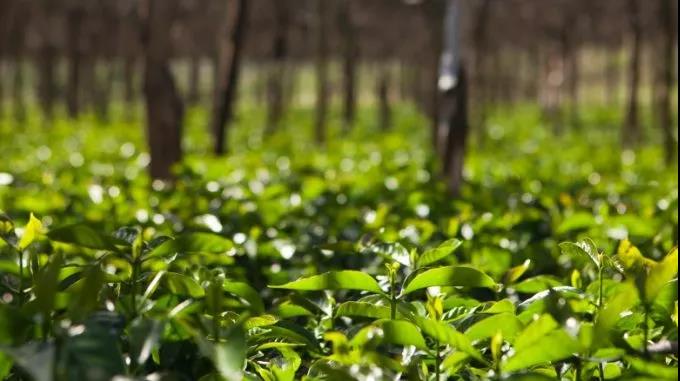
Willem Boot later came to Crescendo as their technical advisor and found samples very similar to the original species of Crescendo being planted at Mule Farm in a virgin forest near the estate known locally as Gori Gesha.
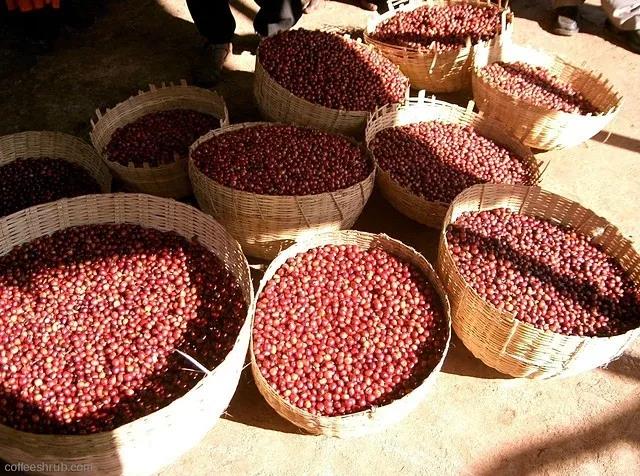
Both the Overtons and Willem Boot believed they had found the origin of rosewood, and later breeding and planting efforts gradually confirmed this conjecture.
At the 2017 Japanese Barista Competition, Takayuki Ishitani won the championship with beans from Guixia Village, not to mention the excellent performance of raw beans from Guixia Village in various bidding cups.
2017 Guixia Village Coffee Manor
Independent bidding data list
(Source: Grand Cru)
The first global public bidding of Guixia Village Coffee Estate began at 9:00 a.m.(BST time) on May 31, 2017, and nearly 3 hours of intense bidding took place. Buyers from China Hong Kong, Japan, Greece and other countries and regions participated in the bidding and successfully won 21 bidding batches.
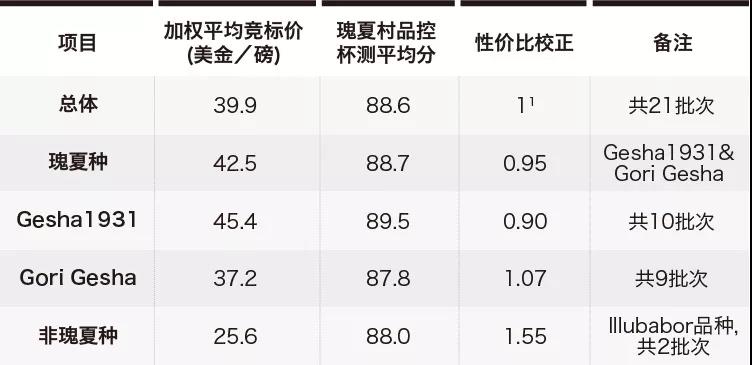
- Guixia Village bidding batch average bidding

Gesha Village owners Adam Overton and Rachel Samuel took part in an expedition to collect seedlings in the forest; they have now grown several Gesha versions from this expedition to achieve the highest quality goal. Rachel said: "Gesha is renowned in the industry for its high quality, but Ethiopia has not been an important part of its story, even though Gesha originally came from here. "We are delighted to be able to help develop the specialty market for coffee in the Gesha region so that this amazing coffee is finally available in its birthplace."
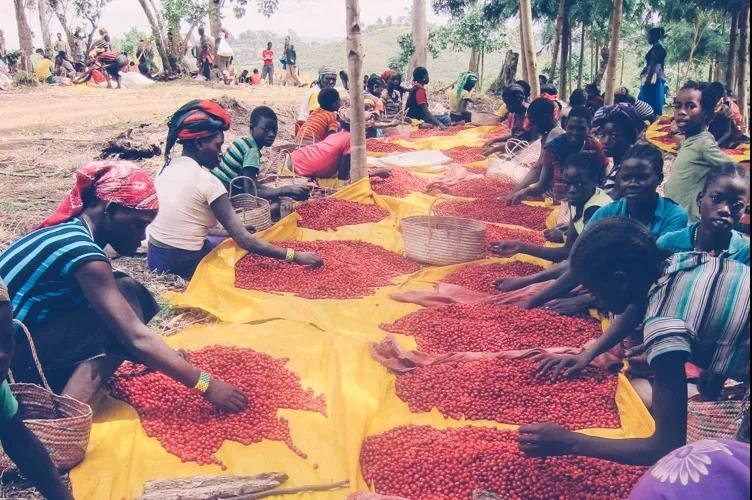
- Guixia Village workers pick coffee cherries
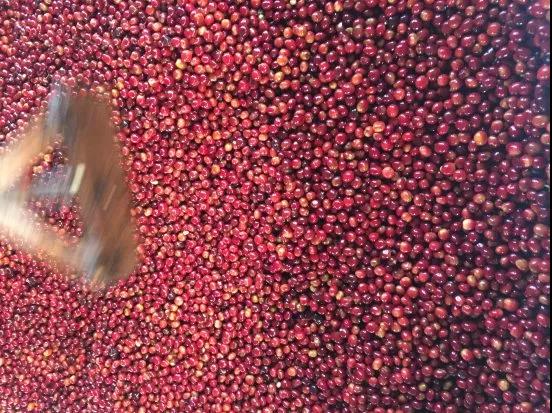
Three links strict quality control:
Create super boutique
(Source: Grand Cru)
> Quality control link 1. Variety selection
In order to fulfill the mission of growing the best coffee in the world, Guixia Village strictly controls the seed selection process. They sent coffee seeds collected from the Gori Gesha forest 20 kilometers away from the village of Gesha to a professional institution for genetic testing to determine that it belonged to the original collection site of the Panamanian rose summer variety; then, by studying the plant morphology of the coffee tree, the appearance size of the coffee bean, and the cup test results, they selected the summer rose seed closest to today's Panamanian rose summer and began breeding. The coffee varieties currently planted in Guixia Village are shown in the figure below:
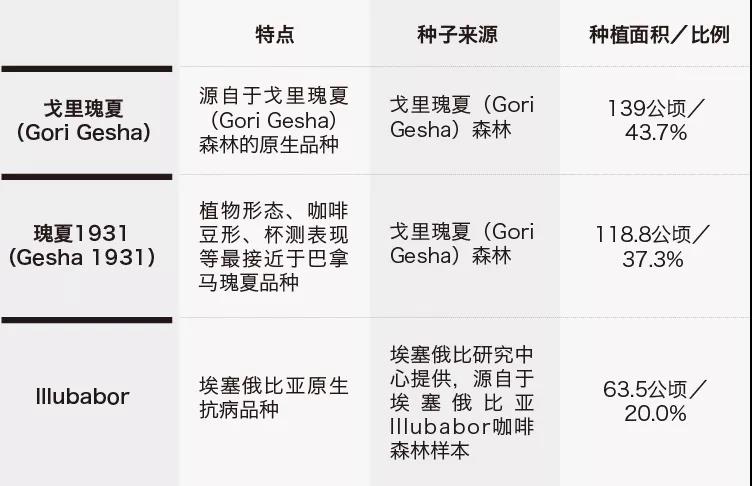
- Existing coffee varieties in Guixia Village
Because the manor area is very large, in order to better manage and distinguish the products, the manor owner divides Guixia Village into 8 regions, and then numbers each batch again to facilitate the differentiation of batches. It is worth mentioning that in some producing areas, the difference between batches may not be very prominent because of its small scale. However, for a large estate such as Guixia Village, the difference between different plots is equivalent to the difference between Panama Manor and Manor, which must be paid attention to.
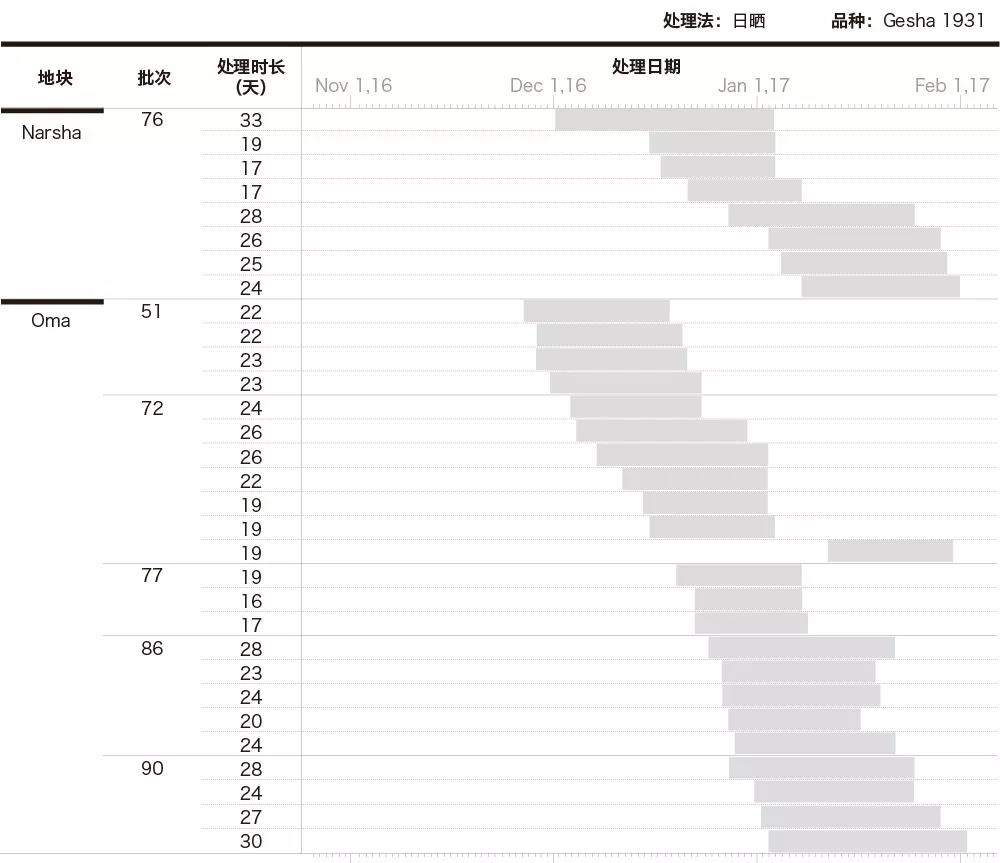
-2017 Processing time of beans in different plots of Guixia Village
02 |treatment
Harvesting and processing.
With the support and cooperation of local residents, they have successfully trained a group of high-level pickers and processing plant workers. "Pick only the ripenest coffee cherries" and "don't take anything that falls to the ground or goes bad" are the requirements of each worker's instruction, and the picking instructor will tell the workers what kind of coffee is the ripenest and what kind of cherry is the bad cherry. When the coffee is dried in the sun, it is also screened again to select moth-eaten beans and green beans. In addition, all dry environments are first dried in a cool place to avoid rapid drying in the sun that makes the coffee shell too brittle and cracked.
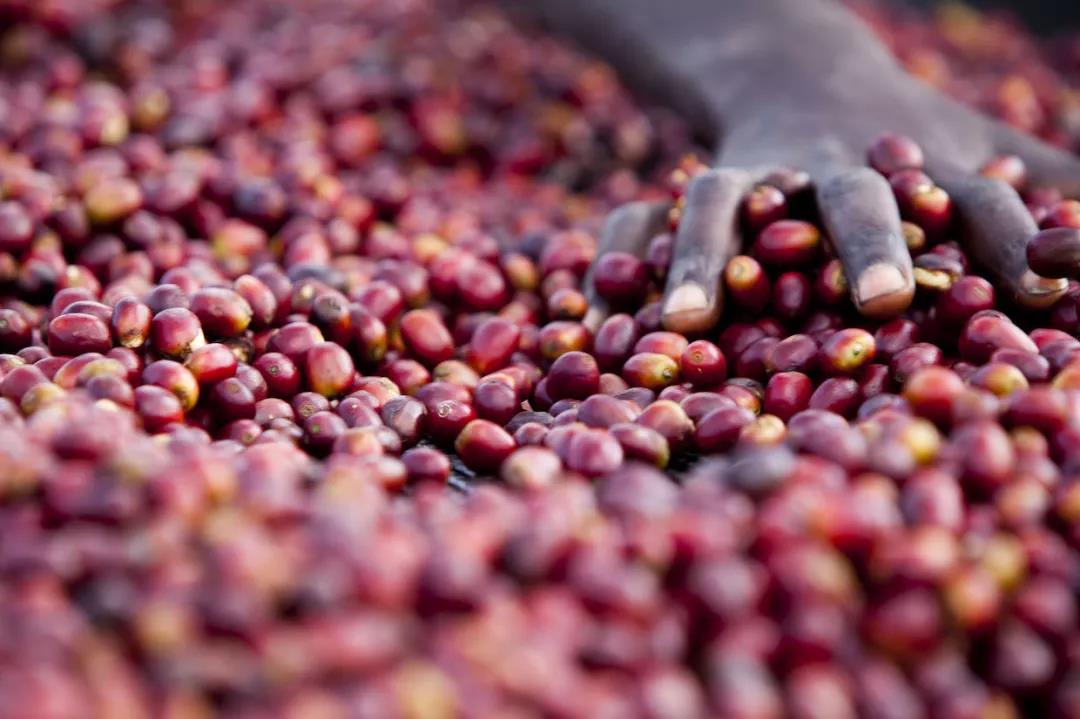
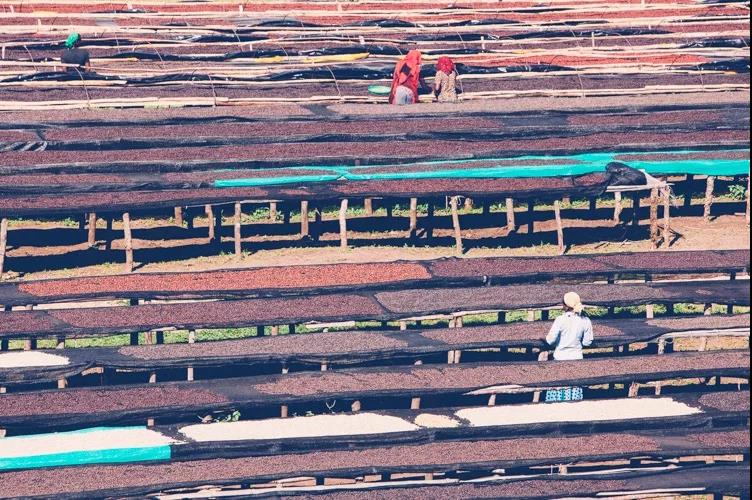
- Sun bed in Guixia Village
There are two main processing methods for coffee green beans in Guixia Village, as shown in the table below:
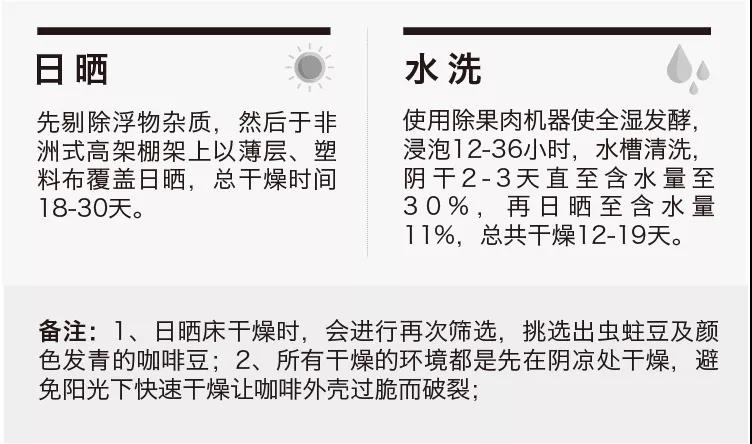
At the same time, Guixia Village is also conducting tests on various treatment methods, dry fermentation and wet fermentation, various honey treatments, etc.
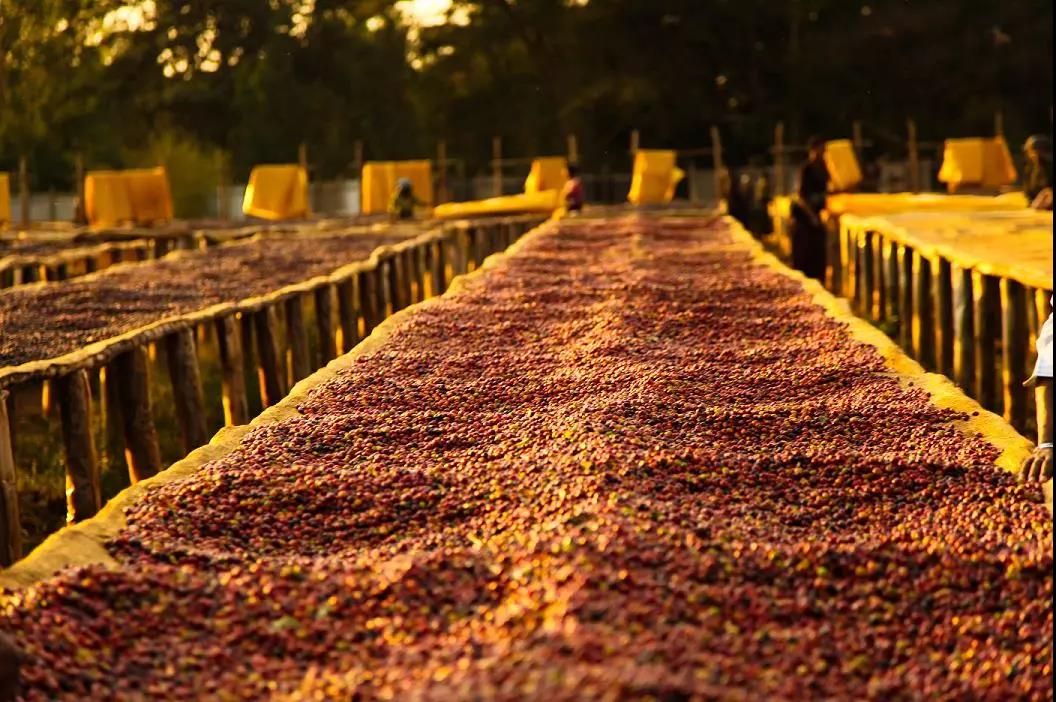
03 |green bean analysis
The size of raw beans is smaller than Panama. The washed rose summer coffee beans have a very beautiful blue-green color. The sun rose summer coffee beans have a beautiful greenish yellow band. The jade-like warm texture smells fresh grass, peach, berry flavor and the milk sweet flavor unique to oolong tea that most coffee beans do not have. It seems that aroma and taste need to be associated with each other, but the faint tea gas is something we can obviously feel.
|Unique flower fragrance
Among the many coffees, floral aromas and intense sweetness of tropical fruits are consistent characteristics of Geisha.
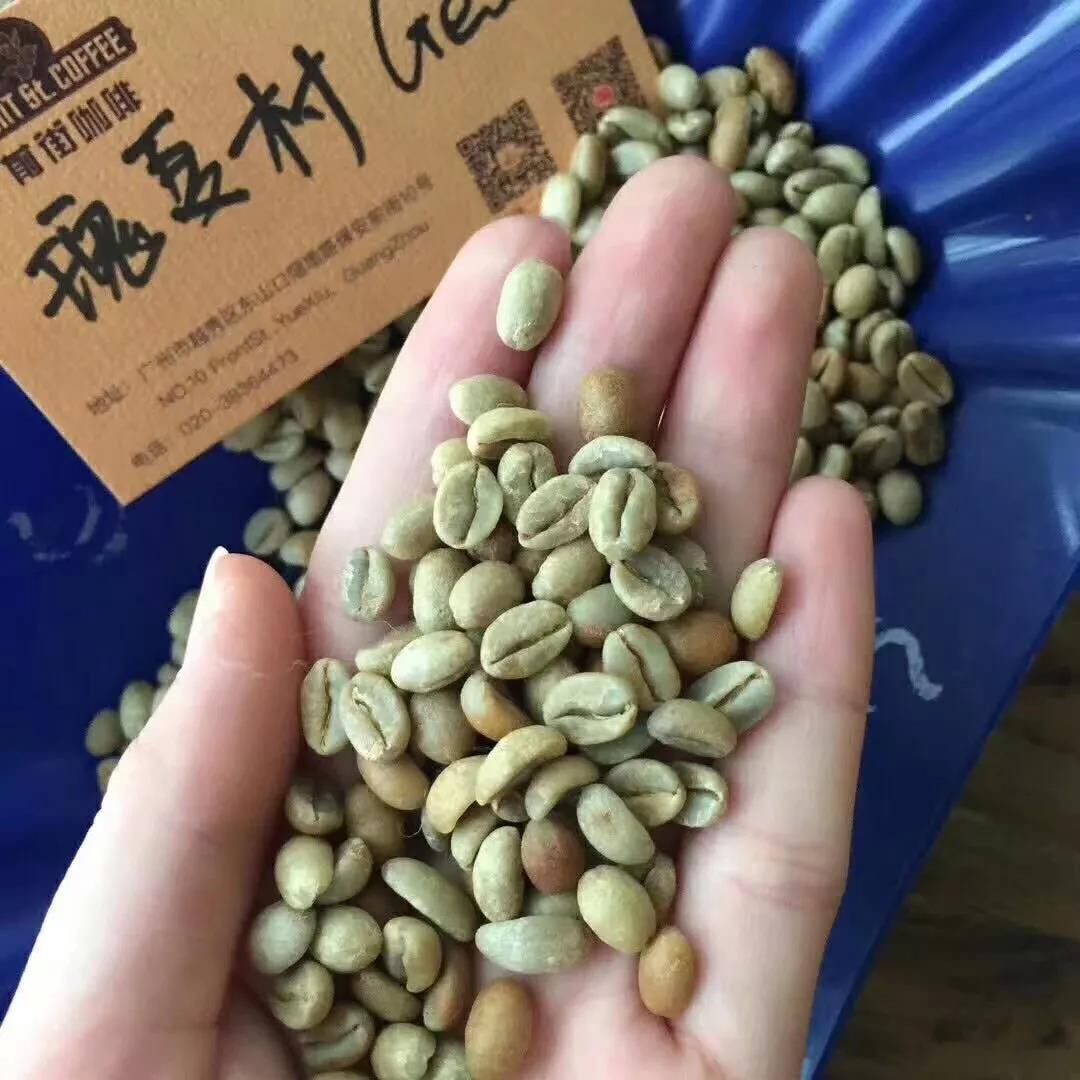
04 |baking analysis
This coffee has smaller particles and higher density, and it absorbs more heat during roasting. The Mena reaction process is also faster. In the first batch of roasting, the temperature of my beans was higher than 210 degrees. I kept applying heat until the coffee beans dehydrated and turned yellow, so that there was enough heat to last until the end of roasting.
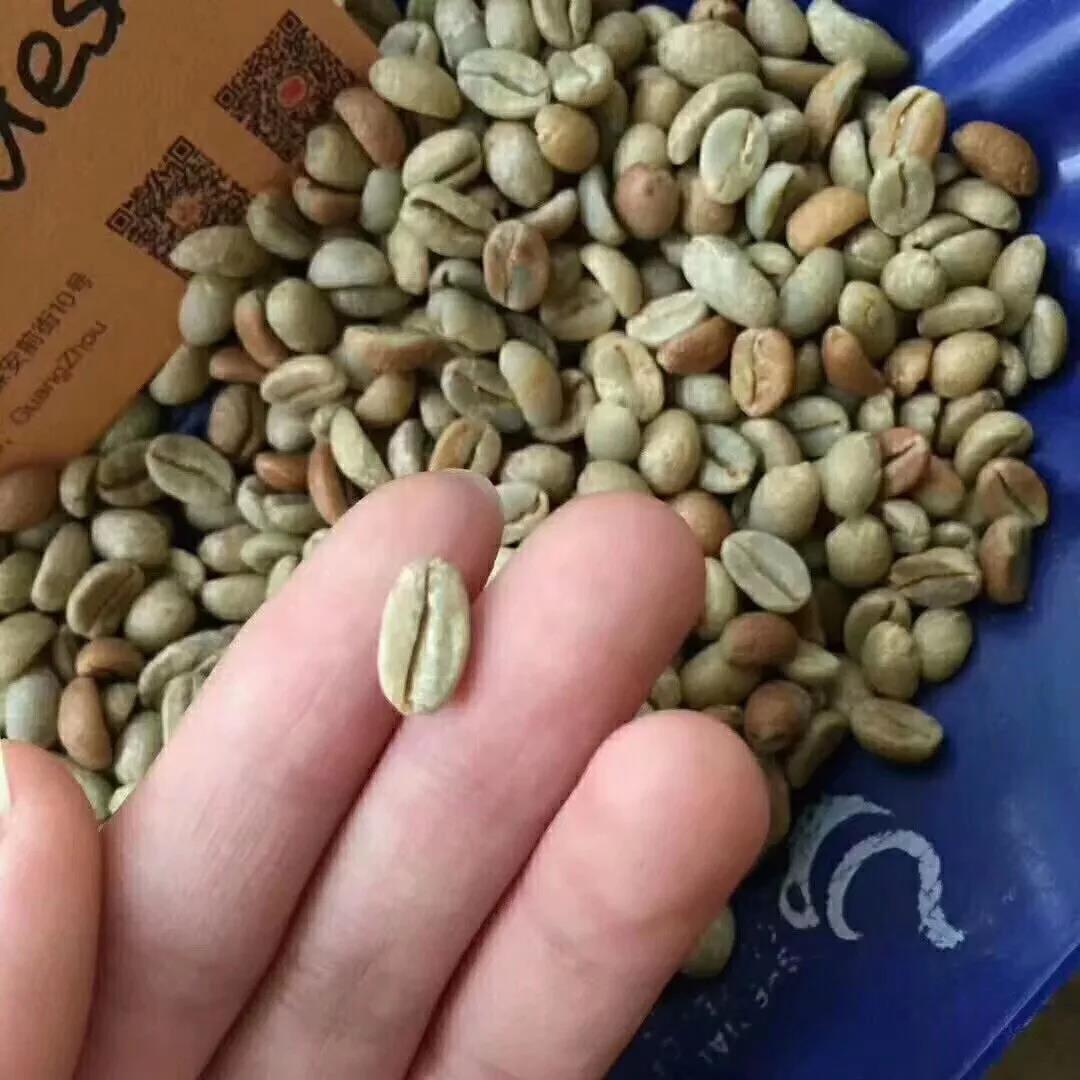
The temperature of the beans is 200 degrees, and the fire is relatively small. In the baking process, gradually increase the fire according to needs. Under this method of operation, the dehydration time of coffee is longer than that of the first batch, and the heating rate is 6-8 degrees every 30 seconds.
| Rose summer, baking
In order to highlight the characteristics and aroma of this bean, use light roasting, so that the roasting degree can play the characteristics of the bean itself, too deep will lose the flower aroma and fruit acid, of course, this should also be adjusted according to the characteristics of the coffee bean and the understanding of the roaster for the bean itself.
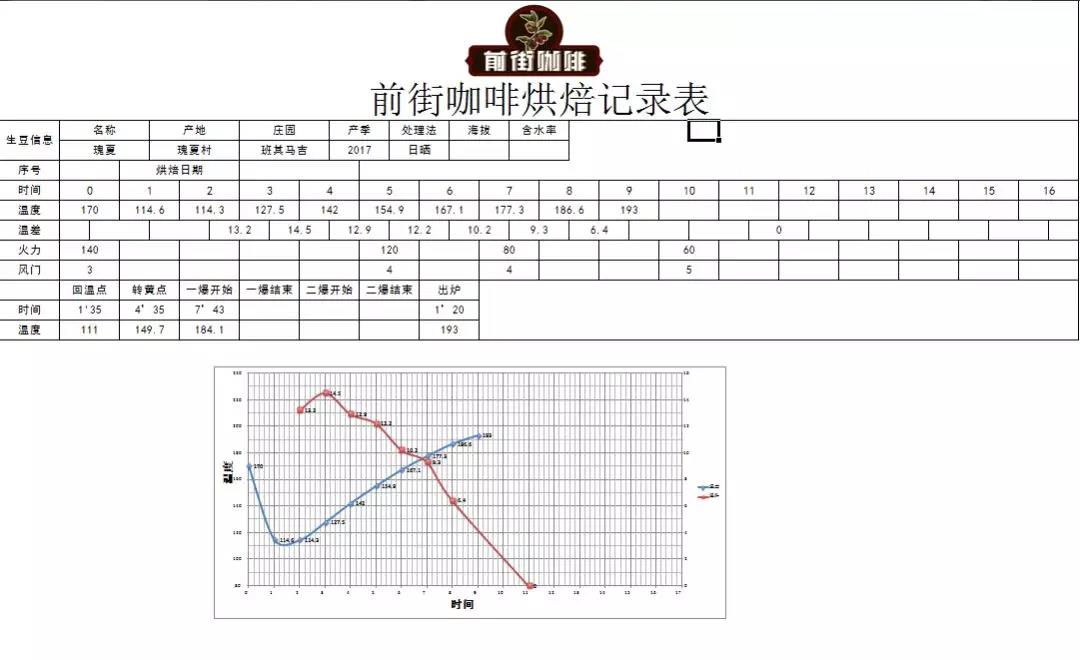
During the roasting phase, a low initial heat of 140 degrees and a slower roasting rhythm are used to express the multi-layered flavor of the coffee.
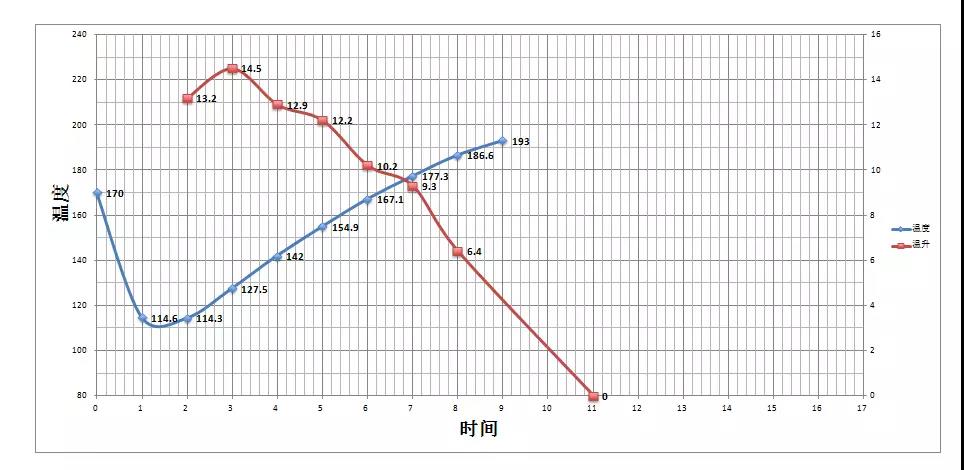
Baking machine Yangjia 600g semi-straight fire
the furnace temperature is 200 DEG C, the oven is put into the pot, the air door is opened to 3.5 DEG C, 30 seconds later, the fire power is adjusted to 140 DEG C, the air door is unchanged, the return temperature is 1 '35', the oven temperature is 152 DEG C, the fire power is adjusted once, at this time, the bean surface turns yellow, the grass smell completely disappears, dehydration is completed, the fire power is adjusted to 120 DEG C, the air door is adjusted to 4;
8 ′ 45 ′ ′, the bean surface appears ugly beard wrinkles and black stripes, toast flavor obviously changed to coffee fragrance, can be defined as the prelude to a burst, this time to hear the sound of a burst point, to 7 ′ 43 ″ to start a burst, turn down the fire to 80 degrees, throttle fully open 5 (adjust the fire to be very careful, not small to no burst sound), a burst after the development of 1 ′ 20 ″, 193 degrees under the pan.
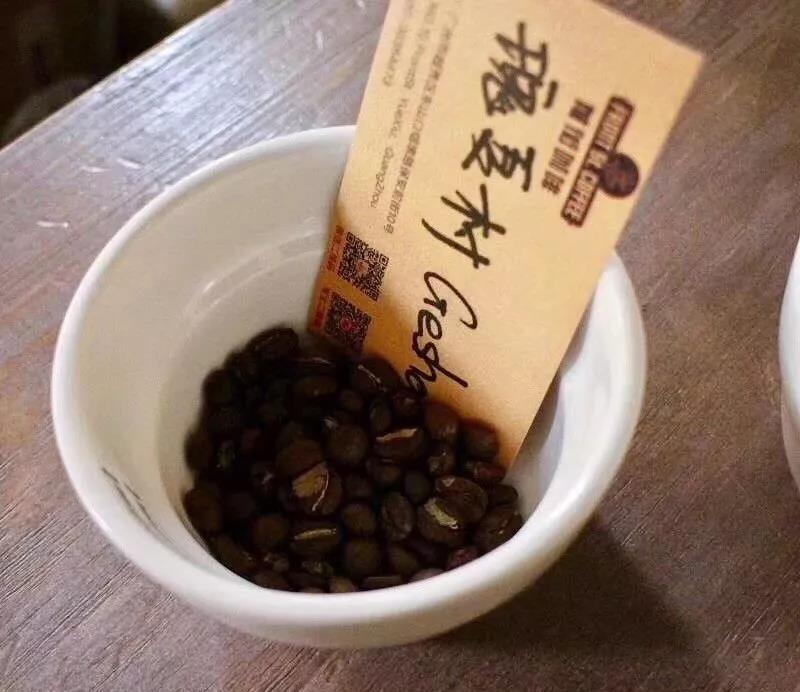
Cup test:
Dry aroma is bouquet, apricot, wet aroma with sweet orange juice, jasmine, sweet peach, bouquet, pineapple, bright and rich, sip citrus, tropical fruit aroma, ripe fruit, berry flavor, citrus, light fermentation aroma, clear and bright acid value, smooth texture, grape, maple sugar, wild ginger flower, delicate acid, clean and balanced taste, lively finish.
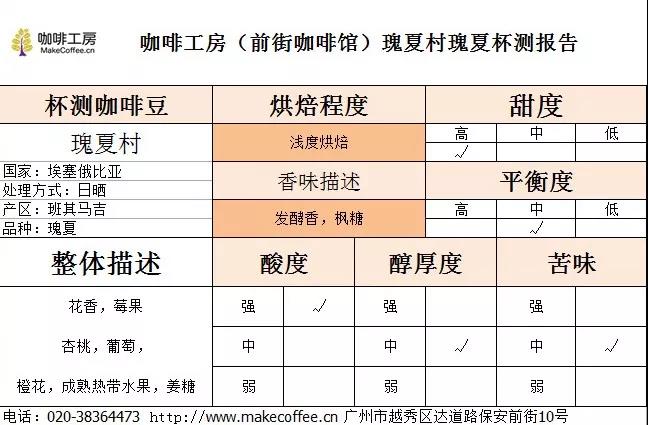
05 |brewing analysis
Recommended cooking methods in Qianjie: siphon, hand flushing
Abrasion: 3.5 (Fuji R440)
Water temperature: 89°C
V60 filter cup, 15 grams of powder, water temperature 91-92 degrees, grinding 3.5, water powder ratio close to 1:15
35 grams of water stewed for 30s
Staging: water injection to 100ml, water cut off slowly to 225ml,
30-100-95.
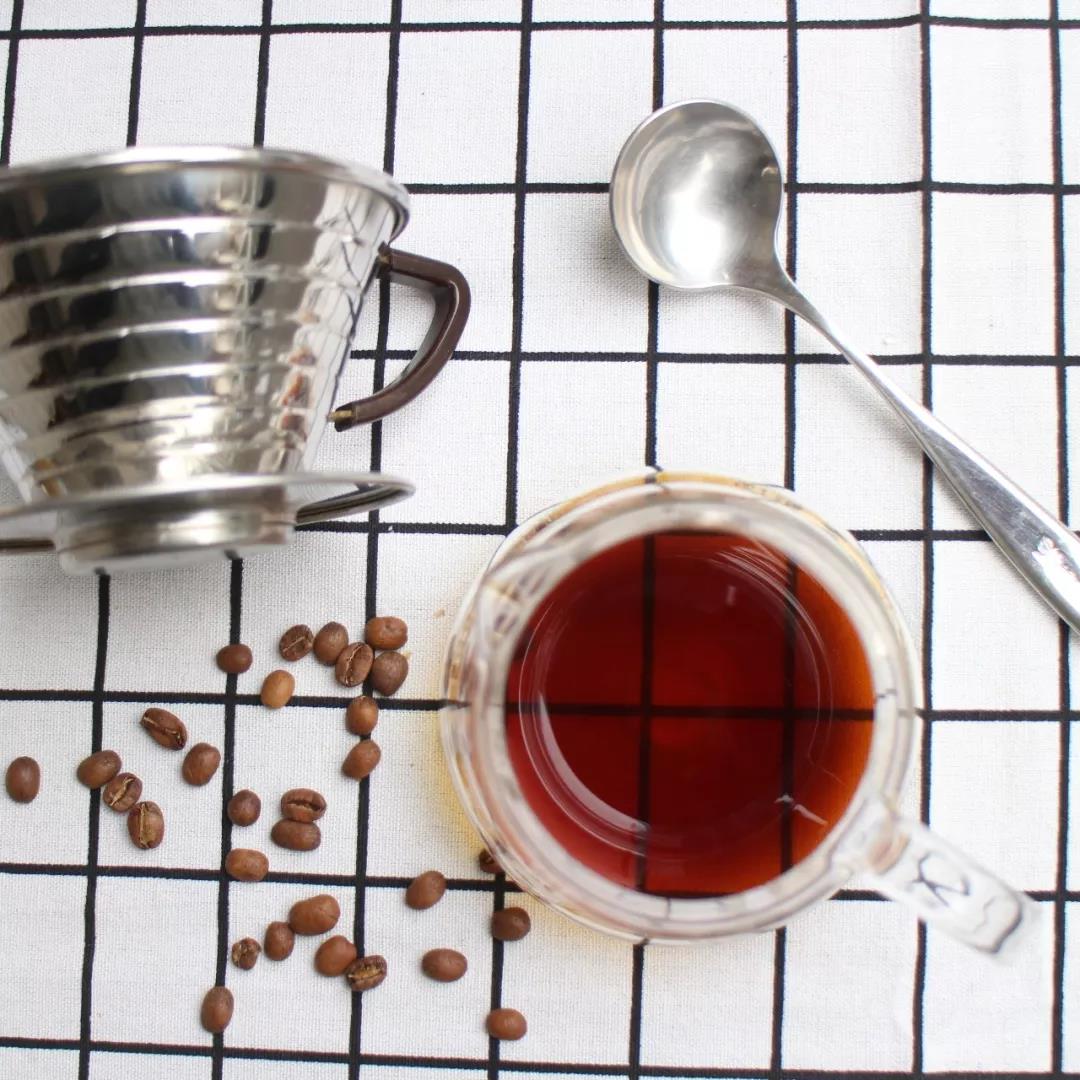
Other suggestions for trickle-filtration extraction:
Normal pressure, recommended abrasiveness of 3.5-4/water temperature 92°C
Aile pressure, recommended 2.5 grind, water temperature 88°C
Hand washing: 3.5 grinding degree, water temperature 89°C
3.5 Grinding-90 degrees water temperature
grinder dosers
aggressiveness number
powder quantity
filter bowl
Kofuji
3.5
15g
V60
water temperature
steam
Second stage water volume
Third stage water
Total time 2:15
91-92 degrees
35g water 30s
100g 1:30
95g
Total water: 225
Sweetness: † † † †
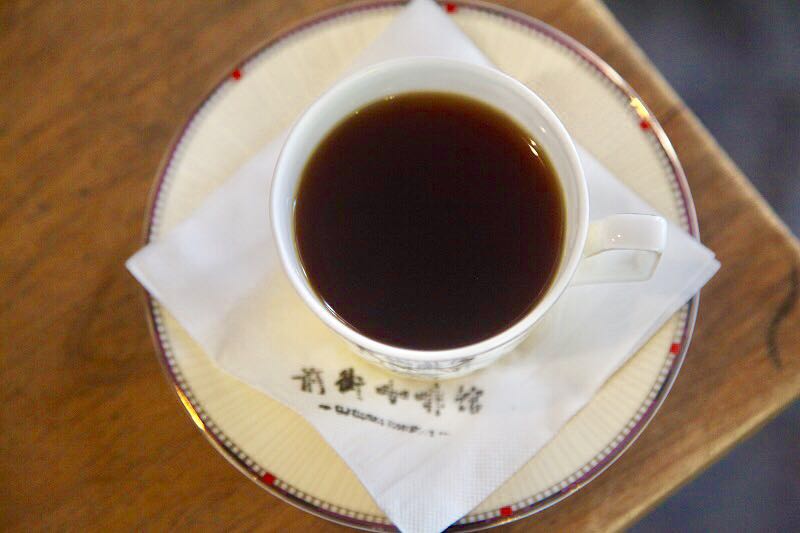
For more professional coffee exchanges, please scan the code to follow WeChat: FrontStreetCoffee

Important Notice :
前街咖啡 FrontStreet Coffee has moved to new addredd:
FrontStreet Coffee Address: 315,Donghua East Road,GuangZhou
Tel:020 38364473
- Prev
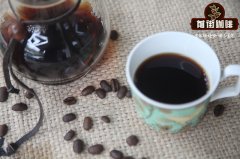
Guodingding Cooperative Solar Yega Snow Coffee G1 Ethiopian Coffee introduces coffee suitable for hand brewing
Professional coffee knowledge exchange more coffee bean information please follow the coffee workshop (Wechat official account cafe_style) Ethiopia sun Yega Snow Coffee Ding Village Alimbukato small farmers G1 Ethiopia Natural Yirgacheffe Banko Gotiti G1 Alemu Bukato Coffee Review record: 94 points in February 2018 and 94 minutes in December 2017
- Next
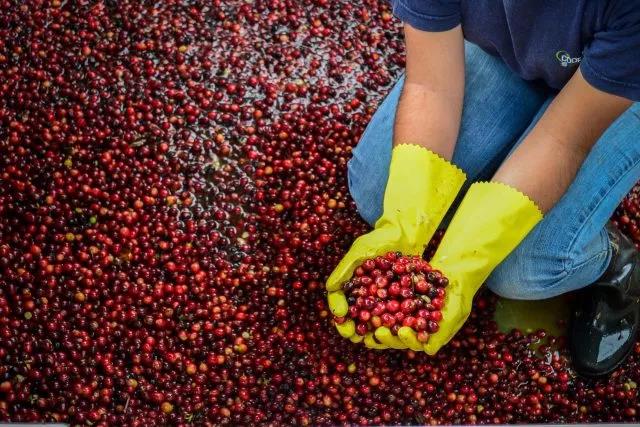
Costa Rican Black Honey | extraordinary Cup Champion Manor Shumawa Manor deals with black honey
How to cook the beans treated with black honey? How does Costa Rica Shumawa Manor handle the flavor and taste of black honey? Professional coffee knowledge exchange more coffee bean information please follow the coffee workshop (Wechat official account cafe_style) Costa Rica Sumava de Lourdes black honey Costa Rica. Shumawa Manor. Kaddura. Heimi 01 | brief introduction of producing area: Costa Rica
Related
- Detailed explanation of Jadeite planting Land in Panamanian Jadeite Manor introduction to the grading system of Jadeite competitive bidding, Red bid, Green bid and Rose Summer
- Story of Coffee planting in Brenka region of Costa Rica Stonehenge Manor anaerobic heavy honey treatment of flavor mouth
- What's on the barrel of Blue Mountain Coffee beans?
- Can American coffee also pull flowers? How to use hot American style to pull out a good-looking pattern?
- Can you make a cold extract with coffee beans? What is the right proportion for cold-extracted coffee formula?
- Indonesian PWN Gold Mandrine Coffee Origin Features Flavor How to Chong? Mandolin coffee is American.
- A brief introduction to the flavor characteristics of Brazilian yellow bourbon coffee beans
- What is the effect of different water quality on the flavor of cold-extracted coffee? What kind of water is best for brewing coffee?
- Why do you think of Rose Summer whenever you mention Panamanian coffee?
- Introduction to the characteristics of authentic blue mountain coffee bean producing areas? What is the CIB Coffee Authority in Jamaica?

